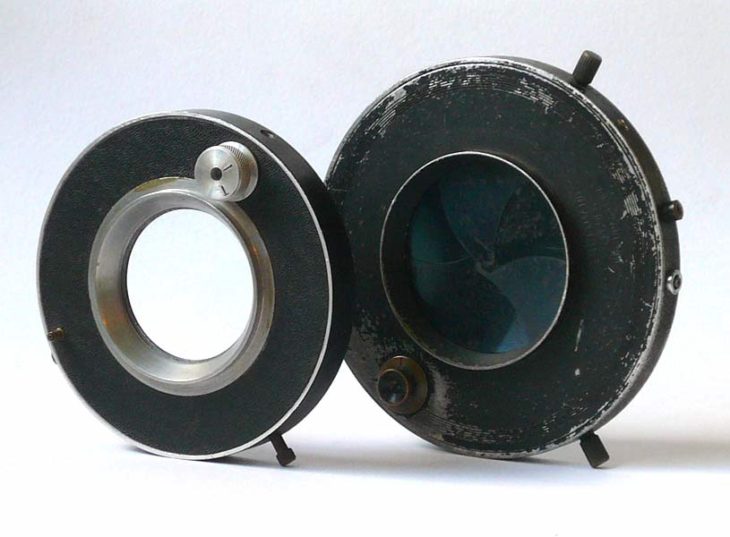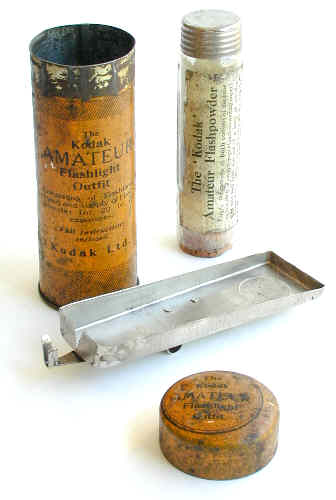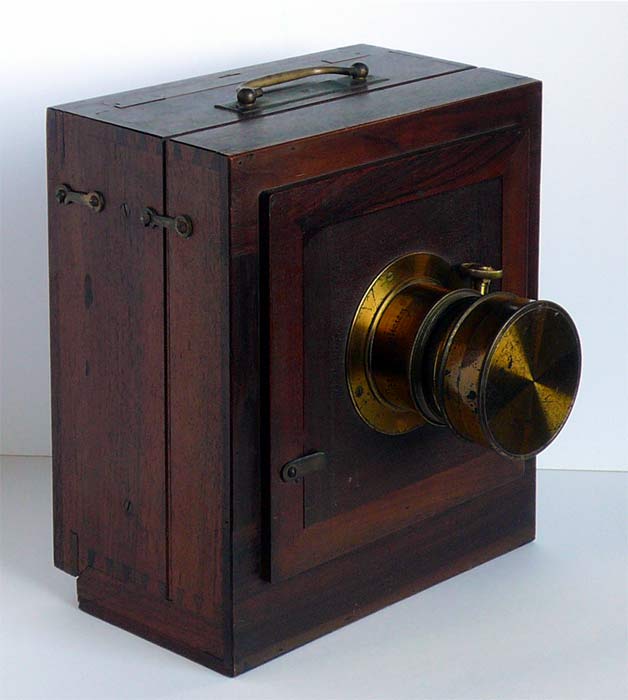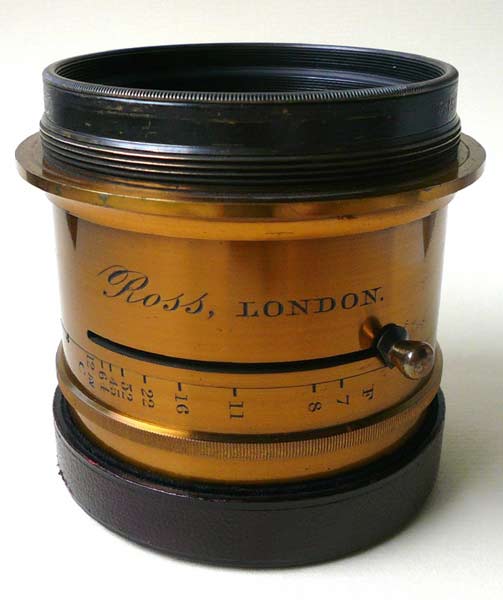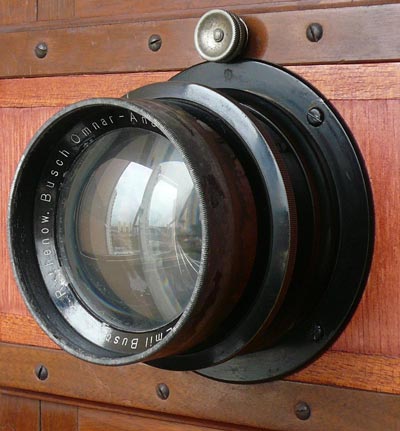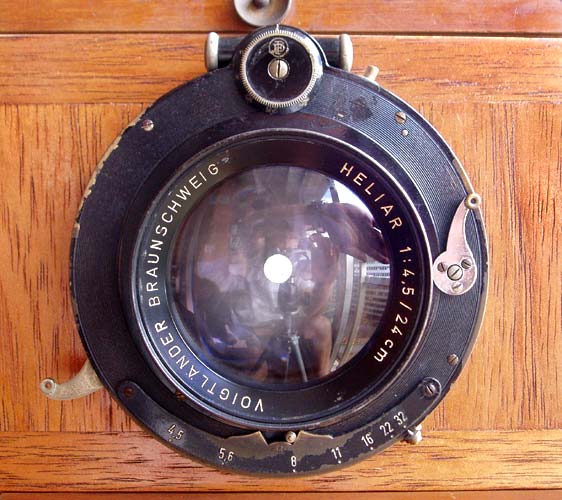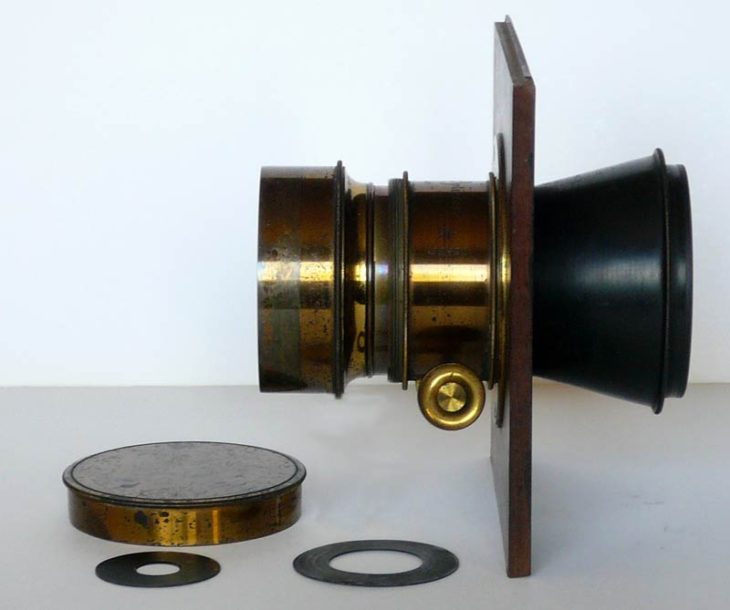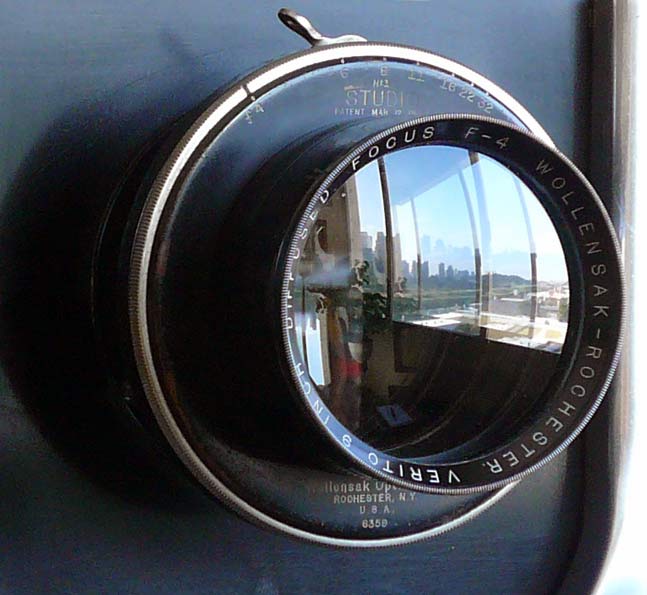This is a very common shutter design used in large format cameras. Is is attached in front of the lens and opens from the center when the six blades are recessed inside the ring. This is not a shutter for those counting thirds of f stops. It is open while you press the cable release or you may set it to close automatically the moment it reaches...
Author - wlungov
In the beginning of photography the flash was something very close to fireworks. They were burned loose in the air, like in this kit from Kodak for the amateur photographer.
– Le Posographe | Kaufmann Inventeur-Constructeur | 1931 – This is a computer. It is, in the sense that you enter information on it; it performs some operations with that (real time in this case) and gives back a result that you can read and use. Every sliding rule or disks is also a kind of a analogic computer. But what a complicate one is Le...
– Collodium Camera | maker unknow | c 1862 – I bought this camera in June 2008 in Bièvres, France, during the annual foire photo. It is a collodion camera having a Darlot Cone Centralisateur lens, both in excellent condition. Collodion, also known as Wet Plate, is a process that produces a glass negative reducing exposure time up to 1 second...
An essential book and very pleasant reading. It is a good balance between technical aspects of lens construction, the challenges posed by the problems involved, and the people, companies and all those who left their mark in history of image making.
At the heart of digital world we find the “bit”. At the heart of digital images we find the “pixel”. The pixel was already know in Antiquity. But as for the want of fine electronics it used to be made out of little stones and “files” were called mosaics. The farthest we look to a mosaic the less we see the...
Many old large format lenses, which are very interesting to use, have no built in shutter. They are called lenses in barrel. For a long time the most popular shutter used with them, normally in front of the lens, was the roller-blind type. The system of having a light proof cloth with a window that passes in front of the lens to expose the film...
One of the first anastigmatic lens in the history of photography. Manufactured by Ross, in England, under license from the German Zeiss. It has 8 elements in two groups that can still be used individually offering thus three focal distances.
– 255 mm | f:4,5 | c1906 – This is an anastigmat general purpose lens produced by Emil Busch A.-G. Rathenow. It came with a wood camera that uses 13 x 18 cm film/plate. That allows a good range of front movements more than camera can deliver as the angle of view is 80º and correspondent image circle of 42 cm in diameter. The design of this lens...
A cult lens, Heliar is famous for giving images a certain creaminess. For this reason, it is still used by many "fine art" photographers and disputed on websites and auction houses.
– 240 mm | ~ f:4 | c1862 – Louis Daguerre released his photographic process in France in 1839. At that time Jean Theodor Jamin was producing optical instruments since 1822. Like many others he quickly incorporated in his portfolio photographic lenses as the demand was soaring. In 1860 Jamin retired and one of his employees took over, that was...
Wollensak's soft focus lens, Verito has its most iconic images probably in pictures of Hollywood stars. Simple in construction and especially designed for studio portraits, it adds a halo that can go from very discreet to completely dominate the image.
